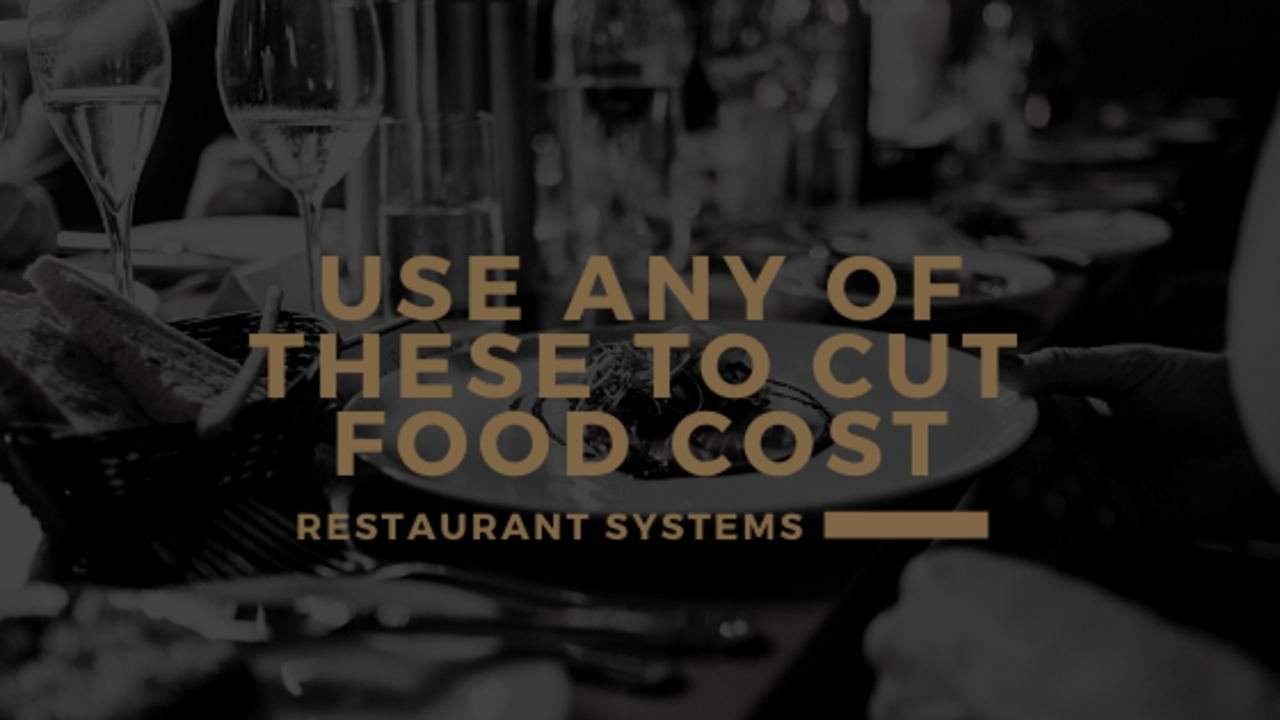5 Ways to Cut Restaurant Food Cost

Would you like to learn how to cut food cost? Here are five systems to use cut your restaurant food costs. Bonus is they are all made easier with spreadsheets or restaurant software. Click below to watch the video or scroll down to continue reading.
Today's topic is five ways to cut your food cost using restaurant software or a spreadsheet. Now, I happen to be an expert on spreadsheets, and I'm also an expert on software. For 16 years, I built a restaurant training, coaching and software company and sold it to a group of satisfied users. The software was created based on my use of spreadsheets and my users wanting something more automated.
Today I operate a restaurant coaching company, and I provide customized spreadsheets to use with systems use in your restaurant. You can also use the systems I teach that lower food cost with software. Spreadsheet or software, it’s kind of the same thing since my systems are universal. How you choose to track and formulate is up to you.
There are literally five things that you need to know that software or good spreadsheets can change your bottom line and help you reduce your food costs.
The number one thing is recipe costing cards. You need accurate up-to-date recipe costs cards. Why? Because if you don't know what your item costs you, how the hell do you think you're supposed to make money? Name a retail industry that they don't know what the item costs or what they need to sell it to make money. Yet we eyeball our recipes and then when asked what the cost is, say something like, “I don't know. I generally know the protein costs. I generally know what the sides cost and then throw out a price.”
With this approach, you will be generally not making money because it’s an industry of pennies, not dollars.
And when you give me those recipe costing cards, we can do something called a menu engineering analysis to find your ideal food cost based on recipe cards and what your customers actually ordered. I can tell you exactly what your food cost should be with no waste, no theft and no spoilage.
Then you can raise the prices on these two items, get rid of these items. We can reduce the cost of this item, implement a new item, change the mix, and all of a sudden you can change your bottom line three to seven points the first time you use menu engineering.
But you can't do that without recipe costing cards.
Next, you have to budget your purchasing. I teach a system called the purchase allotment system. Today I call it the Restaurant Checkbook Guardian. It allows you to give up ordering without giving up your checkbook. Instead of just writing a check, your chef or kitchen manager or bar manager has a budget, and if they want to order more than that, they need to find a problem and fix it today.
The next thing is automatic ordering with par levels, whether it's with a spreadsheet or software. The bottom line is based on your purchasing, your history and based on your forecasted sales and your sales in the past, that I can tell you how many cases of French fries you need to order to go into the $40,000 weekend.
Shelf-to-sheet inventory. This is huge. We take that three to four-hour inventory process, and we make it one hour every week because you’re inputting the products in the order they appear on the shelf. The way I want it counted and priced accordingly by the case here, by the five-pound bag here, the five-ounce portion bag there. And last but not least, key item reports and waste sheets, what I like to call key item tracker and waste tracker, because by paying attention to my key items, five to 15 items, I can prevent theft on a daily basis. By looking at my waste sheet, I can proactively change how I utilize that product every single day in my kitchen.
I'm going to tell you right now if you want to make a change, yes, we can do all these things with spreadsheets. But at some point in time, software makes sense because when you implement those five items, it can tie things together, speed up the process.
But whether spreadsheet driven, whether software driven, you need these things in your restaurant today.
Take this free restaurant evaluation. It takes about 10-15 minutes to fill out and when you're done, you’ll have a 20-25-page customized report based on your answers about your restaurant. It will show you where your gaps are in the 23 stages. There are no strings attached. Just look at it for where your gaps are and what you should be working on now.
I teach systems in my book, Restaurant Prosperity Formula: What Successful Restaurateurs Do, which you can order here.




